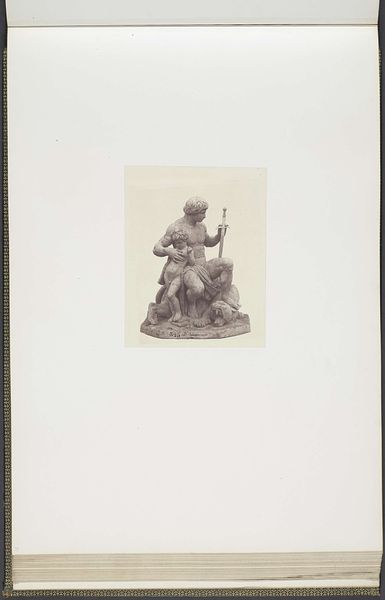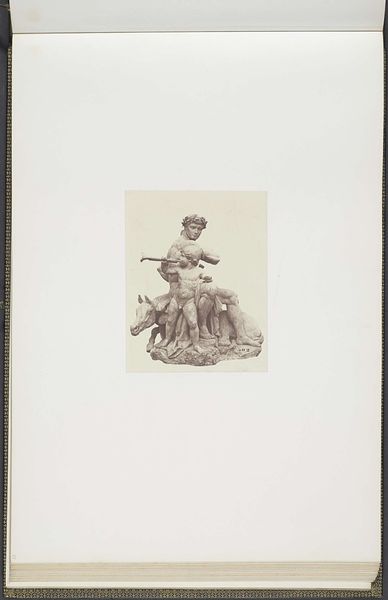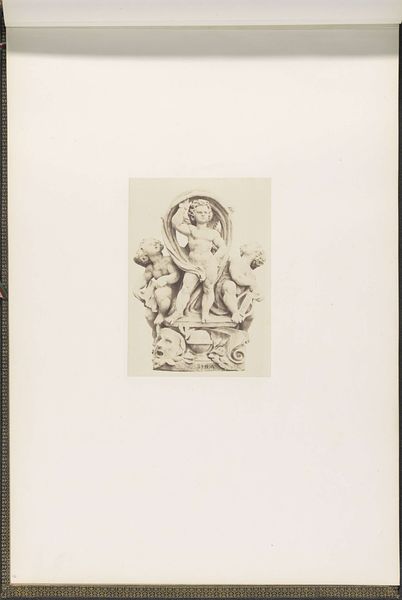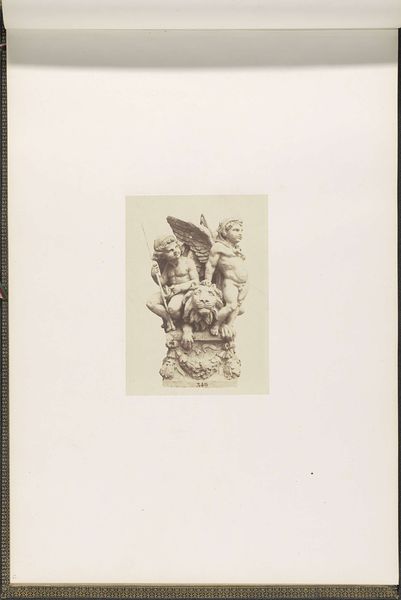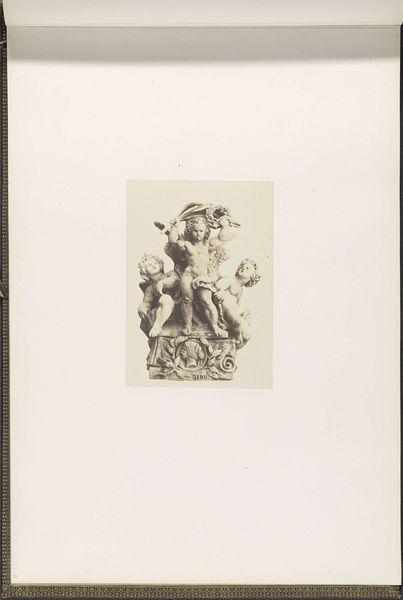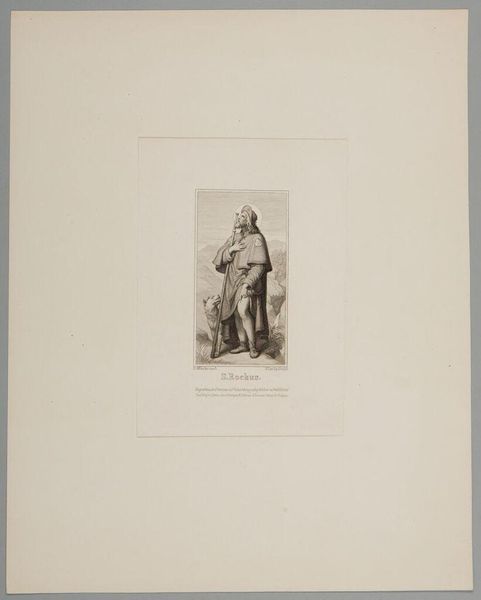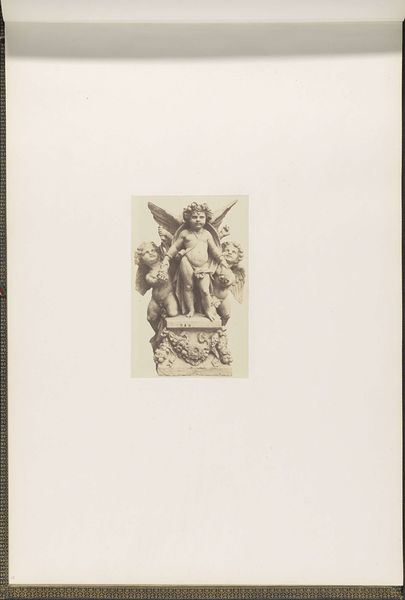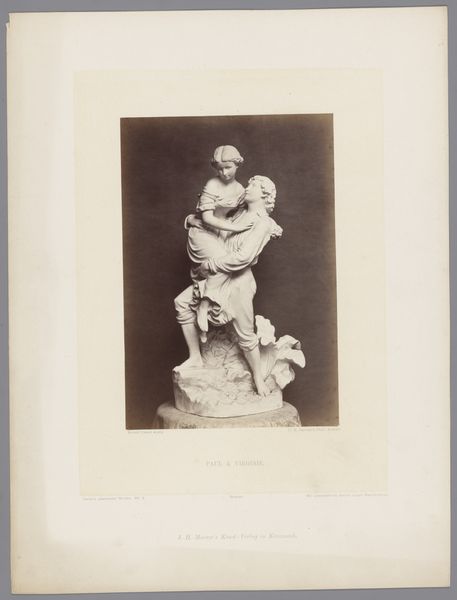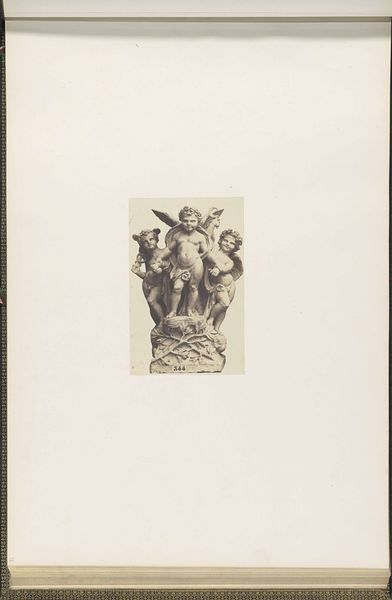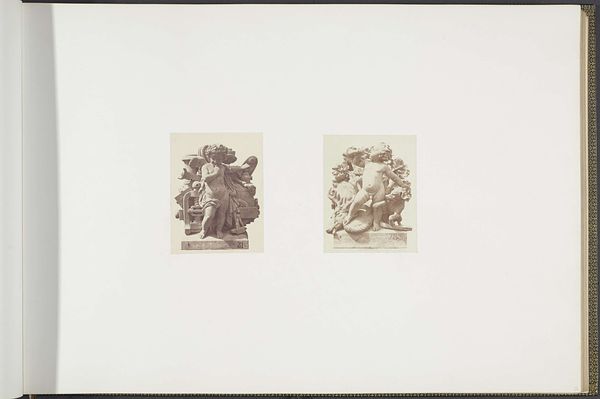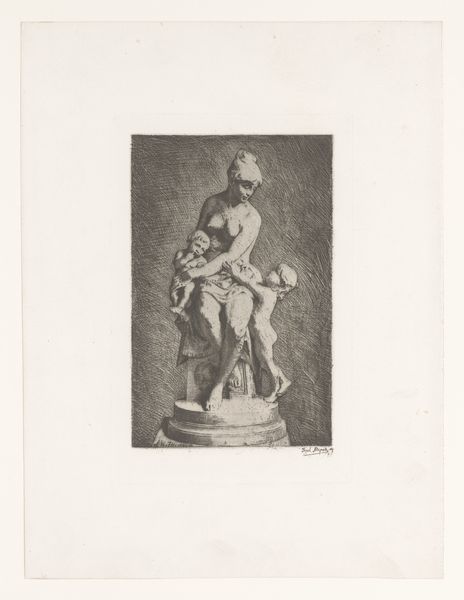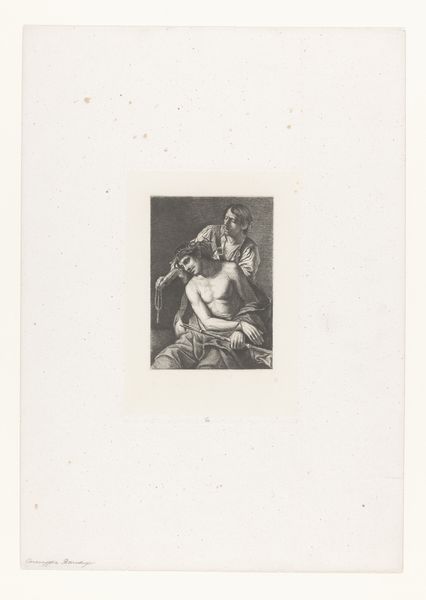
Gipsmodel voor beeldhouwwerk op het Palais du Louvre: "La Paix" door Antoine-Louis Barye c. 1855 - 1857
0:00
0:00
print, photography, sculpture
#
neoclassicism
# print
#
photography
#
sculpture
#
history-painting
Dimensions: height 378 mm, width 556 mm
Copyright: Rijks Museum: Open Domain
Curator: Here we have a photograph of Antoine-Louis Barye's plaster model, dating from around 1855 to 1857, for a sculpture intended for the Palais du Louvre, entitled "La Paix", or "Peace." Editor: It feels monumental, even in this photographic reproduction, doesn't it? A rugged figure dominates the scene, protectively embracing a child. The texture of the plaster, rendered in this monochromatic print, contributes to the work's almost primal energy. Curator: Indeed. Barye was commissioned to create sculptures emblematic of peace and war, intended to flank the exterior of the Louvre Palace. This particular work presents a muscular, possibly allegorical, male figure sheltering a child, beside what seems to be a bull. It exemplifies the Neoclassical style popular at the time. Editor: I see echoes of masculine power structures embedded in the visualization of 'peace.' The man's physique, the possessive gesture—it seems peace is guaranteed through a specific form of control and protection, one which prioritizes the patriarchal. Where are the women? What is their stake in maintaining “peace”? It speaks to nineteenth-century anxieties about gender and nationhood, really. Curator: Certainly. Barye's political affiliations played a key role in his public commissions. As a known supporter of Napoleon III, Barye understood how sculptural allegories could advance specific political goals, and Neoclassicism, with its imperial Roman motifs, was considered a potent visual language for his work. Note also that these sculptures, in their original placement on the Louvre, faced outward toward public spaces, thus contributing to France’s external and self-fashioning. Editor: Right. The image actively projects a carefully considered idea of civic harmony to its public, using powerful symbols and traditional sculptural methods, it creates, I think, something more like a statement of dominance. Looking at this, I wonder about the complexities of visual representation and how political narratives get molded and amplified through supposedly ‘neutral’ forms like public art. Curator: These photographic reproductions by Edouard Baldus also raise interesting points. Here is art object represented by early photograph, adding a documentary element. What do you take away after this short review? Editor: My initial perception, and thinking about how the language of strength and security influences our social understandings even now... the peace sculpture and our ideas continue.
Comments
No comments
Be the first to comment and join the conversation on the ultimate creative platform.
